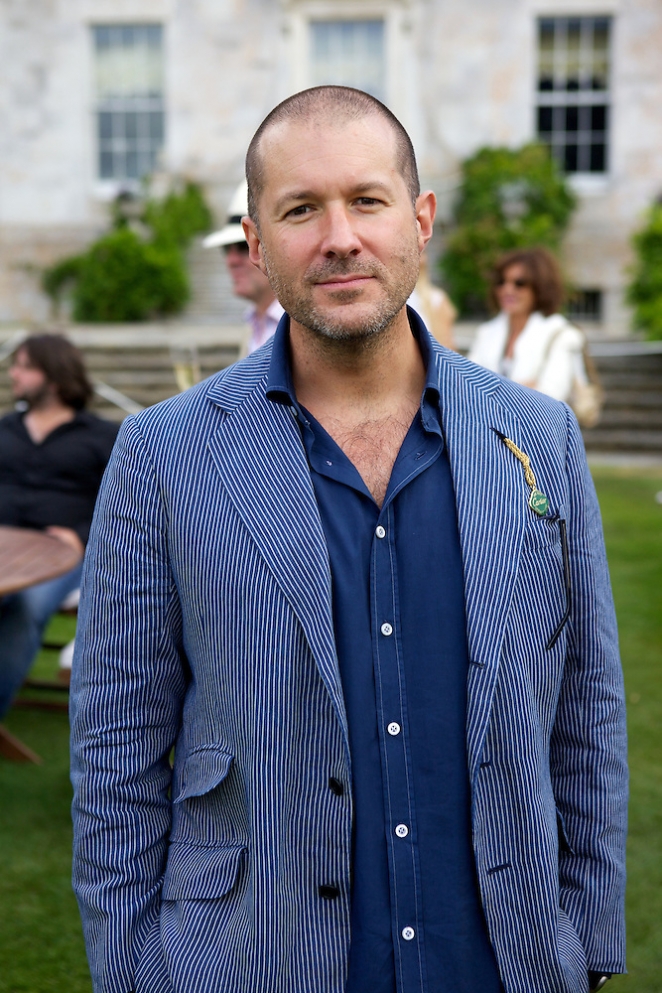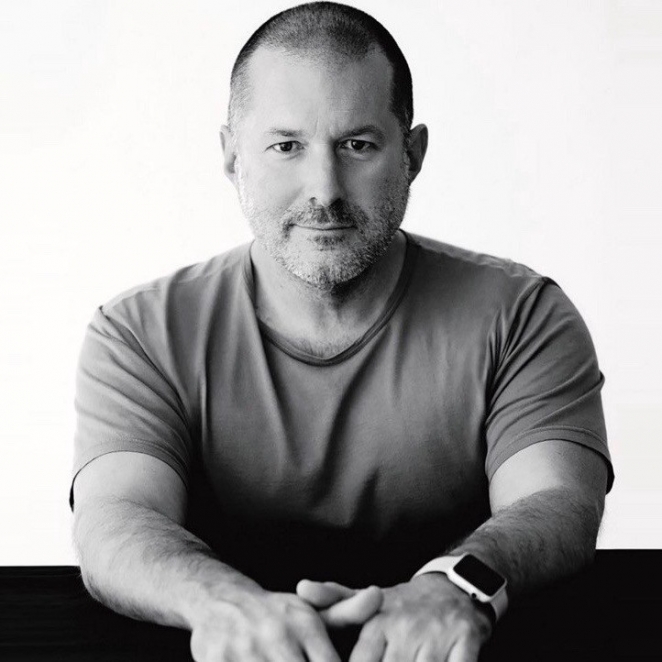Sir Jonathan Paul Ive is one of those figures who will always be remembered for leaving an everlasting mark in the history of design, technology and creativity. Save for the late Steve Jobs, there is no one who had more relevance in the history of Apple than Jony Ive.
Jony left Apple after 27 years in July 2019, leaving behind a history of countless awards and an unmistakable mark in the sleek, minimalist design of Apple products.
Who is Jonathan Ive? How did he rise to such enormous success? What made him so special?
Who is Sir Jony Ive?
Jonathan Ive is a British-American London native, appointed a Knight Commander of the Order of the British Empire in 2012. His designs have often been described as fundamental to the successes of Apple, contributing to making the Cupertino company one of the largest tech organisations in the world.
Jony Ive was born on 27 February, 1967, in Chingford, a suburb of London. His mother was a psychotherapist, while his father was a silversmith. Not necessarily the background you would imagine for a world-famous designer – which yet again goes to prove that we are the makers of our own luck and fortune.
Jony lived in London for 12 years, until his family moved to Stafford, in the West Midlands. He studied design at Newcastle Polytechnic (now Northumbria University) and was then hired by the start-up design firm Tangerine, before eventually moving to the United States. According to an interview with Time, it was Jony's teenage love of cars that made him decide to become a designer, but was put off by the attitude of fellow students in a number of car-design courses in London, and decided to opt for Industrial Design instead.
Jony Ive was diagnosed with dyslexia while attending secondary school, but rather than being put off by the challenge, he embraced it and forged ahead. Like many successful professionals in the creative industry, being neuro-diverse certainly gave him the strength and motivation to push beyond his limits with as much determination as he could. Yet another proof that we should nurture creatives with neuro-diversity in our beautiful industry.

Image credit: Wikipedia
The move to Apple
Jony’s attitude to design was modern, polished and carefully designed. From the start, his products and designs would feature a number of innovative traits, to the point that some of his ideas at Tangerine were rejected by clients for being too costly or modern. Ive was unhappy working for clients whom he disliked and whose views differed from his.
Then, in the early 1990s, Apple became a client of Tangerine, with Ive leading the initial Powerbook designs for the Cupertino giant. Robert Brunner, Apple’s Director of Industrial Design, attempted to formally recruit him. Jony was originally unsure about accepting the position, as he believed that moving to California from Britain would take a toll on his family, but eventually Jony accepted the position and he joined Apple in September 1992.
One of Jony’s first designs for Apple was the second-generation Newton MessagePad, an electronic handheld device with a flip cover. The flip cover itself was Ive’s favourite part of the design, anticipating the popularity of flip cellphones some time later. It is reported, however, that the initial lack of commercial success nearly prompted Ive to quit on a number of occasions. It was Jon Rubinstein, Apple’s Senior Vice President, who convinced Jony to stay and help Apple make history, following the revival of the company in 1996.
Steve Jobs and the Golden Age of Apple
Steve Jobs was ousted by other Apple executives in 1985. He returned with renewed energy in 1997, determined to make history with his company and lead the way of technological innovations. He appointed Jony as the Senior Vice President of Industrial Design and, together, they worked to revolutionise hardware design year on year.
Jony’s first assignment under Steve Jobs was the iMac G3, introduced in 1998 with a translucent plastic case. Jony and Apple were determined to challenge the status quo; all computers at the time were enclosed within a boring beige case, and Jony designed a colourful all-in-one, solidifying his relationship with Steve Jobs and kickstarting the story of the iMac.
The iMac was like no other. It featured ports on the side through a comfortable and accessible lid, it got rid of the floppy disk and was (obviously) met mostly with criticism and scepticism due to its innovations. Later, Jony Ive’s ideas would make the history of industrial design, with the iMac G4 Sunflower model (2002) now part of the permanent collection at Moma.
In 2014, Jony explained his close relationship with Steve: “When we were looking at objects, what our eyes physically saw and what we came to perceive were exactly the same. And we would ask the same questions, have the same curiosity about things.” Ive was given his own office at Apple during the early 2000s and was the only Apple designer with a private office. Only his core team and top Apple executives were allowed access into his office, as it contained all the concepts and designs for early prototypes that the company would later develop. Steve and Jony were so close that their offices were linked through a hidden, built-in corridor with single-access doors.
Since the early 2000s, Jony led the design on Apple’s biggest products, including iPod, iPhone and iPad.

Image credit: Pocket Lint
The Revolutionary Designs of Jony Ive
Jony’s designs became uniquely distinctive in building Apple’s identity. The iPod in 2001 was designed to compromise capacity and size, and had an incredibly simple design with a scroll wheel and five buttons. Portable MP3 and music players thus far had been bulky and inconvenient, and Jobs and Ive worked together to ensure the iPod would bear the Apple difference.
A year later, Apple released its iMac G4 Sunflower model, already mentioned above. The computer was similar to a desk lamp, with most of the hardware contained within a semi-spherical base. The screen was attached to an arm that users would rotate to suit their needs.
The iPod would be able to dominate the music market with iTunes, until the iPhone in 2007 made it obsolete. It revolutionised the entire industry. Steve Jobs said that Apple aimed to reinvent the phone, which was essentially a larger iPod Touch with touch controls and internet access. Since then, the iPhone has been updated and reinvented multiple times, progressively leading to larger screens and the complete disappearance of front buttons.
A year later, Apple revolutionised the laptop scene as well. The MacBook Air was released as the “world’s thinnest laptop”, only 1.94 centimetres thick and incredibly light to carry around, despite its high power.

Steve Jobs holding and presenting the first iPhone in 2007. Image credit: Wired
Additionally, Jony oversaw the production of the first iPad, which featured a 9.7-inch touch screen and was compatible with the majority of Apple’s existing apps. The tablet was created to help users with reading, listening to music, playing games and, later, watching films and videos. The iPad was released in 2010 and prompted a number of competitors to enter the market with their own tablet solutions.
Soon enough, around 2013, Jony took over as lead of both the hardware and software divisions of Apple. This led him to design and release iOS 7, the first major overhaul of the User Experience on iPhone, conceived to get rid of the clutter and align iOS with the company’s minimal aesthetic. A year later, in 2014, Jony Ive worked on the first model of the Apple Watch, designed to communicate with iPhones and other devices, control music and keep track of user health and activity.
Jony could hardly stop at hardware and software, and so he additionally oversaw the construction of the doughnut-shaped Apple Park in Cupertino, California. Jony insisted on several occasions that the park was treated like an Apple product at all times, with prototyping and designing phases carefully borrowed from the design process to build the most incredible and groundbreaking campus for the Cupertino giant.
After Apple
On 27 June 2019, at the age of 52, Jony left Apple after 27 years to start his own design firm, LoveFrom, with Industrial Designer Marc Newson. LoveFrom would work with Apple as its primary client, but it would also allow Jony more freedom in regards to choosing his own projects, despite keeping an incredibly low profile.
LoveFrom does not have a website, nor it discloses how many people it employs. Jony is, however, consistently recruiting former Apple design colleagues into his firm, with the last four announced in June 2021.
The Legacy of Jony Ive
Jony left an everlasting mark on the history of design. His revolutionary and innovative designs for Apple have already entered the halls of fame, he received numerous accolades and awards, and his work is universally recognised as groundbreaking all across the world.
If one is fortunate enough to exchange a few words with Jony, he will come across as an incredibly curious and driven person. He believes in the power of creativity to change the world, and he believes in the importance of learning over winning an argument. According to Jony, wanting to learn is the most important gift you can give to yourself. During a commencement speech at the California College of the Arts in May this year, Jony had many words of wisdom for the students.

Image credit: ReThink Reviews | Medium
“As a generation of creatives, with your own new and hopeful ideas, you are critically important,” said Jony, with the pandemic acting as a poignant background for his speech. “This is not the time to seek the comfortable familiarity of the past, but rather to build and make something new.”
“Opinions are not ideas, opinions are not as important as ideas, opinions are just opinions. Being curious fuels our appetite to learn, and wanting to learn is far more important than being right.”
Sure, his products were not entirely void of design or user experience flaws. Many components in Apple’s computers are not replaceable or glued to the motherboard, making repairs extremely costly. Thin keyboards are hard to clean, the AirPods batteries are notorious for causing problems, and the iPhone 6 Plus had an issue that caused the screen to self-destruct over time. Many complain that the Apple products are too expensive for what they offer. But beyond this legitimate criticism and sometimes compromises, often solely adopted to ensure that a product can look good, lies an undeniable truth: that Jony Ive has revolutionised the way we look at hardware design and is a legendary figure in the history of industrial design, full stop.
Very few creative professionals will ever be able to say that.






